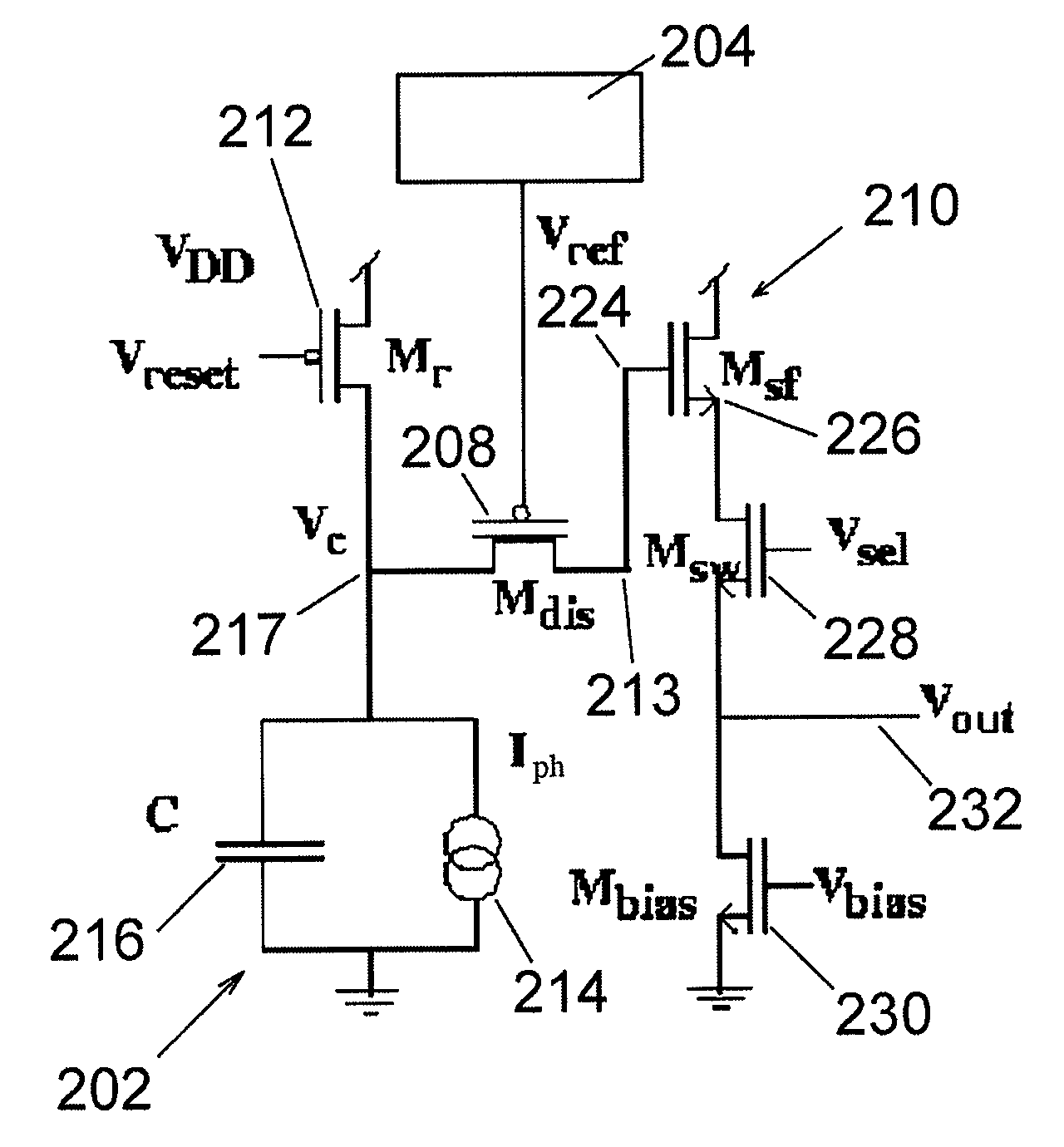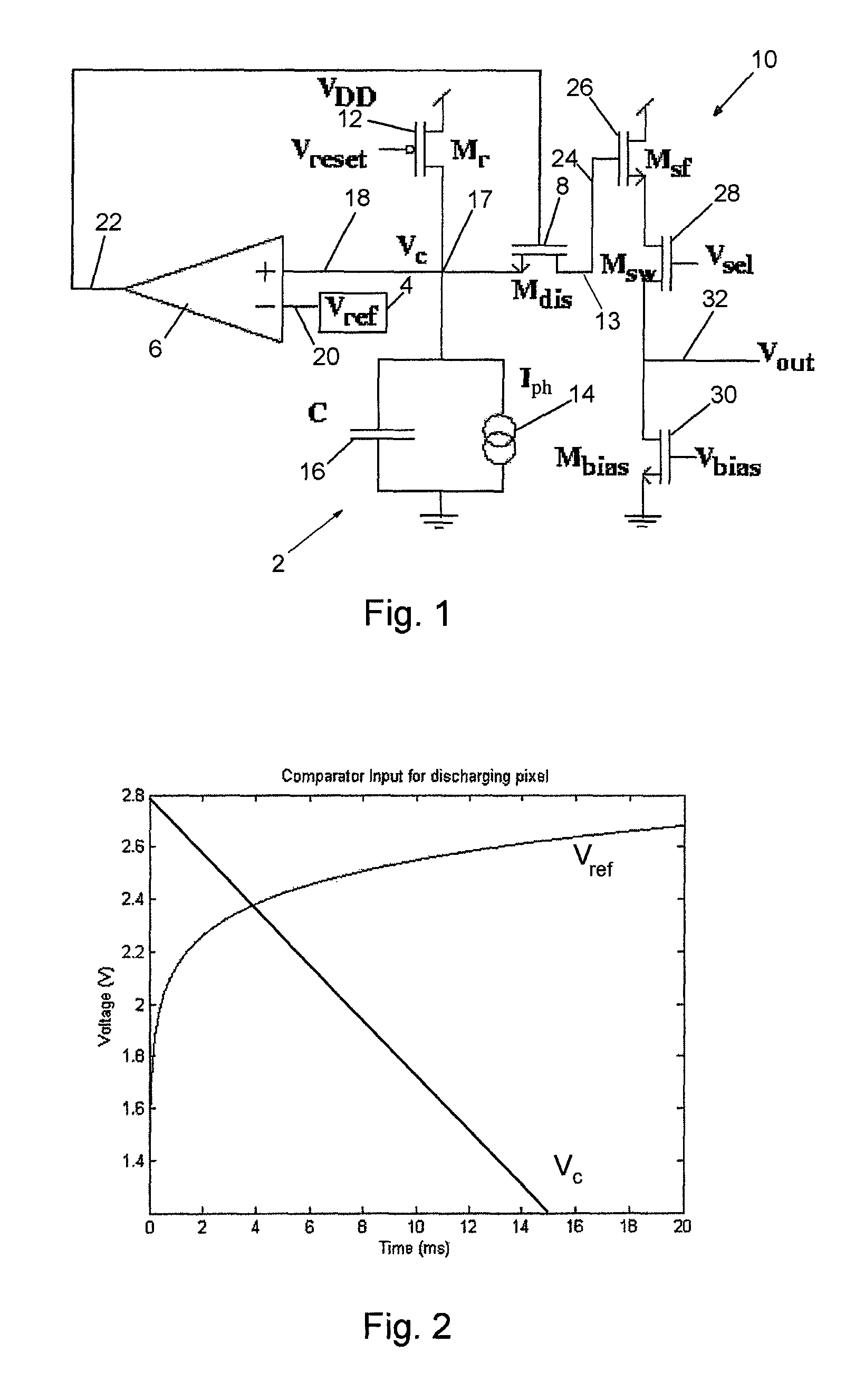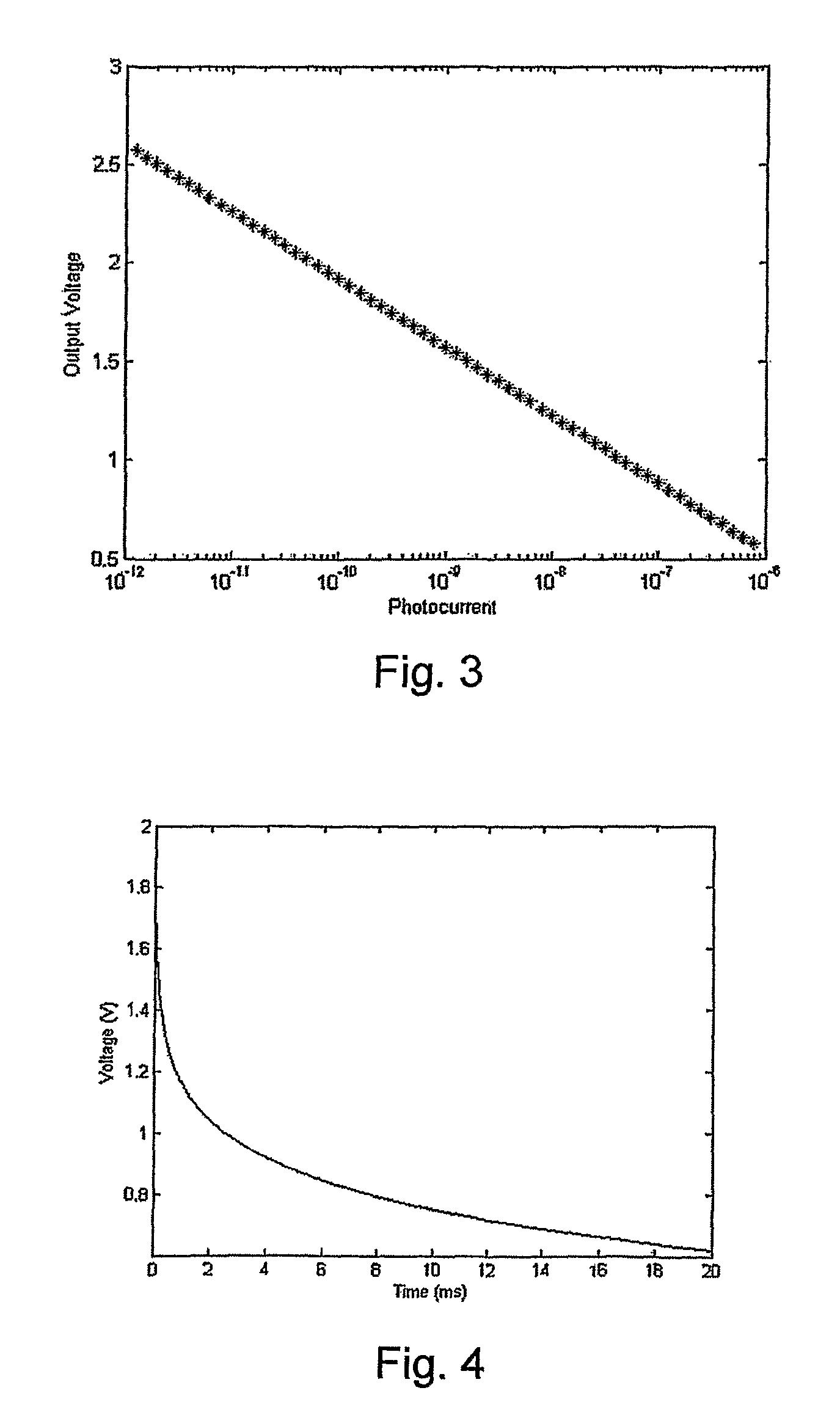Logarithmic image sensor with improved dynamic range
a dynamic range and image sensor technology, applied in the field of image sensors, can solve the problems of slow process, low dynamic range of image sensors with conventional integrating pixels, unsuitable for many applications, etc., and achieve the effect of increasing the noise immunity of any analogue signal, reducing the effects of pixel variability and temporal noise, and increasing the amplitud
- Summary
- Abstract
- Description
- Claims
- Application Information
AI Technical Summary
Benefits of technology
Problems solved by technology
Method used
Image
Examples
first embodiment
[0051]An image sensor for a camera conventionally includes an array of pixel detectors. FIG. 1 is a schematic circuit diagram of a pixel detector that forms part of such an array in an electronic image sensor according to the invention.
[0052]The pixel detector includes a photosensor device 2, a signal generator 4, comparator 6, a transistor disconnect switch 8, an output device 10 in the form of a read out circuit and a transistor reset switch 12. The comparator 6 and the transistor disconnect switch 8 form a sensing device having an outlet 13 that is connected to the input of the output device 10. In this embodiment, the transistor disconnect switch 8 is an n-channel MOSFET.
[0053]The photosensor device 2 comprises a photodetector 14 connected in parallel with a capacitor 16. The required capacitance C can be provided by a separate capacitor as shown in the drawing and / or by the intrinsic capacitance of other circuit components. The photodetector 14, which is shown here as a constan...
second embodiment
[0067]FIG. 8 is a schematic circuit diagram of a pixel detector that forms part of an electronic image sensor according to the invention. The pixel detector includes a photosensor 102, a first signal generator 104, a sensing device comprising a comparator 106 and a transistor disconnect switch 108, an output device 110 comprising a read out circuit, and a transistor reset switch 112.
[0068]The photosensor 112 comprises a photodetector 114 connected in parallel with a capacitor 116. The photodetector 114 may for example be a photodiode or phototransistor. The photosensor 102 provides a signal at connection 117, represented by the capacitor voltage VC. This photodetector signal is connected to a first input 118 of the comparator 106. The signal generator 104 is connected to a second input 120 of the comparator. The reset switch 112 is also connected to the photosensor 102 through connection 117.
[0069]The comparator 106 has an output 122 for a capture signal, which is connected to the g...
third embodiment
[0076]FIG. 9 is a schematic circuit diagram of a pixel detector according to the invention. This embodiment uses fewer transistors per pixel than the first two embodiments and thus provides significant cost and size advantages over those embodiments. This is particularly important in image sensors with a large number of pixel elements.
[0077]The pixel detector includes a photosensor device 202, a signal generator 204, a sensing device 208 comprising a transistor switch, an output device 210 and a transistor reset switch 212. The transistor switch 208 has an outlet 213 that is connected to the input of the output device 210. In this embodiment, the transistor switch 208 is a p-channel MOSFET, which only conducts when the gate voltage is less than the source voltage by an amount equal to the transistor threshold voltage. When the gate voltage is equal to or greater than the source voltage minus the threshold voltage, the transistor 208 ceases to conduct.
[0078]The photosensor device 202...
PUM
 Login to View More
Login to View More Abstract
Description
Claims
Application Information
 Login to View More
Login to View More - R&D
- Intellectual Property
- Life Sciences
- Materials
- Tech Scout
- Unparalleled Data Quality
- Higher Quality Content
- 60% Fewer Hallucinations
Browse by: Latest US Patents, China's latest patents, Technical Efficacy Thesaurus, Application Domain, Technology Topic, Popular Technical Reports.
© 2025 PatSnap. All rights reserved.Legal|Privacy policy|Modern Slavery Act Transparency Statement|Sitemap|About US| Contact US: help@patsnap.com



